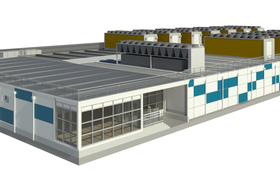Work has finally begun on installing the Aurora supercomputer at the Department of Energy's Argonne National Laboratory.
The Intel supercomputer, which was repeatedly delayed and reworked, is now expected to be "comfortably over 2 exaflops" in peak compute performance, thanks to Intel's new GPUs performing better than expected.
If it hits this benchmark, and actually comes out before 2023's El Capitan, this would make it the world's fastest and most powerful supercomputer.
Aurora was originally meant to launch in 2018 as a 180 petaflops supercomputer featuring Intel's Xeon Phi chips. But when Phi was delayed, soft-launched, and then canceled, Aurora was pushed back and re-architected with new processors, as an exascale system.
It was then set to be the world's first exascale supercomputer - one capable of performing more than a billion billion (1018) operations per second. This, too, did not happen.
Intel was forced to delay the system indefinitely after it admitted it was struggling to develop 7nm chips. That included its new Ponte Vecchio GPU, which is a core component of Aurora.
The supercomputer was pushed back from a planned launch in mid-2021, ceding the awaited milestone of the first US exascale system to the 1.5 exaflops Frontier supercomputer at Oak Ridge National Laboratory. But that supercomputer, which is currently being installed, is also not the first exascale supercomputer - with China thought to have already secretly launched two 1.3 exaflops supercomputers.
When the AMD CPU-GPU Frontier launches, it will be the world's most powerful supercomputer, a title it was expected to hold for some time given that Aurora was only set to squeeze past 1 exaflops. Now, however, Frontier will be overtaken by Aurora when it launches.
"On the two exaflops versus one exaflops bill, largely Ponte Vecchio, the core of the machine, is outperforming the original contractual milestones," Intel CEO Pat Gelsinger said at the Intel Innovation virtual conference in response to a question by The Next Platform.
"So when we set it up to have a certain number of processors — and you can go do the math to see what 2 exaflops is — we essentially overbuilt the number of sockets required to comfortably exceed 1 exaflops. Now that Ponte Vecchio is coming in well ahead of those performance objectives, for some of the workloads that are in the contract, we are now comfortably over 2 exaflops. So it was pretty exciting at that point that we will go from 1 exaflops to 2 exaflops pretty fast.”
The system could hit around 2.4 exaflops at peak - although to do so the supercomputer will consume an astronomical 60MW, as compared to Frontier's 1.5 exaflops.
Then comes El Capitan. Featuring AMD CPUs and GPUs, the Lawrence Livermore National Laboratory is expected to launch in 2023. The supercomputer is on track to deliver “in excess of 2 exaflops” peak performance, for a power consumption in the low 30MWs.
After that, things get a little more theoretical. China has a secret 'Futures' program, which hopes to develop a 20 exaflops system by 2025. Intel, meanwhile, is claiming an even more ambitious target by 2027.
In the same virtual conference, he said: "We are going to be the first to zettascale by a wide margin," he said, with a zettaflops equalling one thousand exaflops, or 1021.
“And we are laying out as part of the Zetta Initiative what we have to do in the processor, in the fabric, in the interconnect, and in the memory architecture — what we have to do for the accelerators, and the software architecture to do it. Zettascale in 2027 is a huge internal initiative that is going to bring many of our technologies together. 1,000X in five years? That’s pretty phenomenal.”




